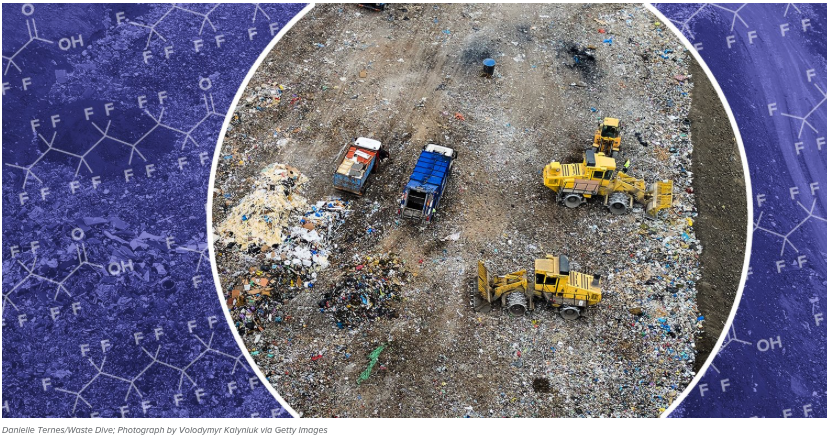Some worry PFAS could have National Sword-level implications for landfills. Stakeholders are aiming to avoid blame for contamination, while seeking out solutions to address the mounting crisis.
Meleesa Johnson can trace her costly and mounting problems with one notorious family of chemicals back to a letter she received last year.
For decades, the Marathon County Solid Waste Department in Wisconsin sent leachate from all three of its landfills for treatment to a facility along the Wisconsin River. Last year, that facility sent a letter to the county through an attorney stating they would no longer accept the leachate. Johnson, the department’s director, said they cited concerns about PFAS and “the potential for litigation.” Wisconsin’s Department of Natural Resources has said those owning properties that are the source of PFAS will be responsible for taking action; the facility indicated it did not want to be found responsible for any contamination.
The letter shocked Johnson, who said she found herself suddenly seeking a home for as much as 17 million gallons of leachate annually. She negotiated for another nine months with the facility while her department “scrambled” to find an alternative. Ultimately, the county settled on sending leachate to three different municipalities whose wastewater treatment facilities all discharge along the river. Those additional treatment and transportation costs have tripled Johnson’s leachate budget, from $350,000 to now over $1 million a year.
“It doesn’t even change the amount of PFAS being discharged into the Wisconsin River, it changes the location,” said Johnson.
Late last year, Johnson and other solid waste stakeholders in Wisconsin took an unusual approach and formed a coalition with the aim of shifting conversations about PFAS contamination. They say they want to communicate to policymakers and communities that solid waste and wastewater entities did not create the problem, but do want to be part of the solution.
“PFAS have the potential to impact landfills in a way that is similar to what National Sword has done to recycling,” said David Biderman, president and CEO of the Solid Waste Association of North America (SWANA). “Whether it does depends on the science and law, rules, and regulations enacted at the federal, state, and local levels.”
Like many of her peers, Johnson expressed concern about the severe health implications of PFAS and acknowledged public outcry as valid and legitimate. But she also remained candid about struggling with costs and the need for unity across her field as it grapples with a crisis. All methods of PFAS disposal currently involve landfills at some point. With regulations on the horizon, the issue is rapidly becoming among the most complex to face the industry in decades.
Public companies lobby as rising costs leave small players vulnerable
Many conversations about PFAS in the waste stream center on responsibility and questions about who will shoulder the costs associated with cleanup and mitigation. Public companies have largely remained quiet about the issue, even as they have moved to address it with lawmakers.
Most public landfill companies, including Waste Management and Republic Services, either declined to comment or did not elaborate on how PFAS are impacting their operations. But federal lobbying records show the issue has been of note for the two giants.
Find complete article here
Institute of energy management

